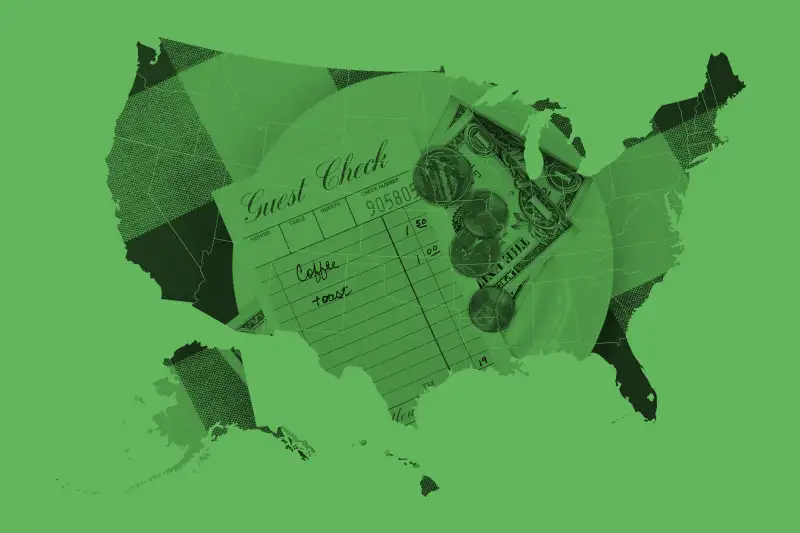This Map Shows Which States Are the Best Tippers — And Which Are the Worst

Is a 20% tip the new normal? Not quite yet.
According to a new survey from Discover of almost 1,000 Americans, hairstylists received about a 13% tip on average—the highest tip level outside of waiters, who typically make 16%.
Yet 13% for stylists is actually slightly below the recommended level of 15-20%, according to guidelines set out by the etiquette experts at the Emily Post Institute.
"It's a pretty standard tipping range," says Lizzie Post, co-host of the Institute's Awesome Etiquette podcast. Post adds that it may depend on your hair length and styling as well. If the stylist is spending four hours on your hair, a higher tip is likely anticipated.
While tips for hairstylists may be low, Americans come closer to the recommended zone when it comes to tipping food delivery drivers. People generally tip these folks about 12%, falling within the Institute’s guidelines of 10-15% for home delivery.
On the other end of the spectrum, takeout cashiers get the lowest level of tips—a mere 4%, followed by casino dealers. And your Uber and Lyft drivers aren't making bank either. Despite both companies now offering riders the option to give in-app tips, drivers are only getting 8% on average. That's slightly less than their taxi counterparts, who receive 9%, the survey found.
Across the U.S., Discover found the highest tippers are in Wyoming, Idaho, and Nebraska, while the worst were in Arkansas, Nevada, and Montana. Generally, those who lived in New England as well as East South Central region (Tennessee, Kentucky, Mississippi, and Alabama) tipped the highest—about 17% on average.
So why are people shaving off dollars from their tip?
Discover's survey found that most people dock the tip for poor, slow or rude service. In fact, little things like forgetting to refill a water glass knocks a server's tip down to 14%, the survey reported. Meanwhile, rudeness made people leave the smallest tips—6% on average.
But Post says good service is a two-way street. If an experience doesn't live up to your standards, voice concerns early, she recommends. "Don't just leave one penny on the table," she says. "It won't have the intended impact." When a server receives a low tip without any other explanation, Post says that rather than thinking they did something wrong, most will simply assume you're a jerk. Instead, tell a manager—and don't leave out the honesty, Post says.